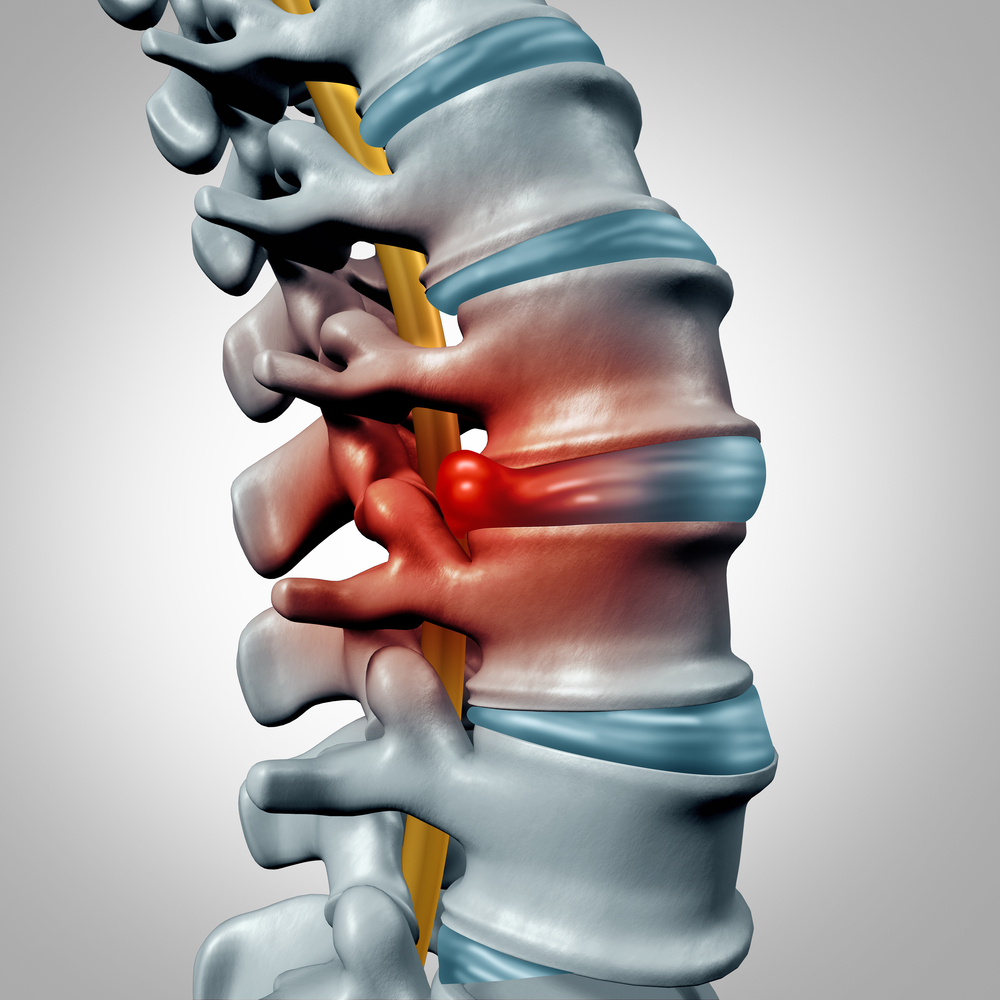What is a Herniated Disc?
A herniated disc, or ruptured disc, occurs when the vertebral discs of the spine become deformed placing pressure on the nerves that pass through the spine. This deformation occurs when there is a tear in the fibrotic outer ring that surrounds the disc. These tears can be due to wear and tear or a sudden injury, causing the jelly-like nucleus of the disc to push against its outer ring. This pressure against the outer ring and nerves may cause lower back and/or leg pain.

How Does it Happen?
As mentioned above the tear can be due to sudden injury or wear and tear over time. In many cases, a herniated disc is related to the natural aging of your spine. Discs have a high water content, and as we age our discs begin to dry out and weaken. The discs begin to shrink and the spaces between the vertebrae get narrower. This normal aging process is called disc degeneration.
Symptoms
Most commonly people experience low back and/or leg pain. Other symptoms include weakness, numbness, or tingling down the legs.
What can you do?
Physical therapy is a proven and effective way to treat a herniated disc. As a team, we can prescribe an exercise routine that is safe and utilizes movement based therapy, strengthening, stretching and manual therapies to help you get back to your everyday routine with no or minimal pain.
Remain active, but listen to your body. Bed rest is not advised for a herniated disc and can actually cause more problems or make your symptoms worse. However, taking frequent rest breaks will also keep back muscles and symptoms from flaring up and getting worse. Patients are also advised to avoid sitting for extended periods of time.

